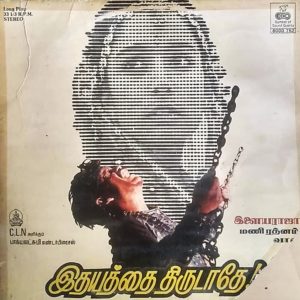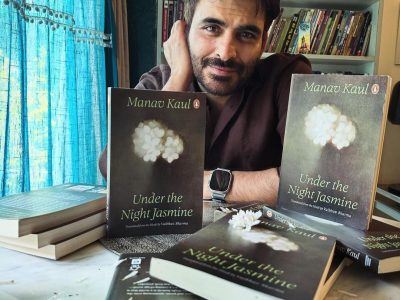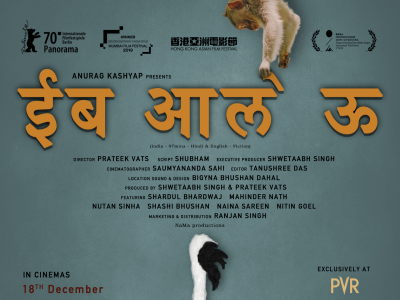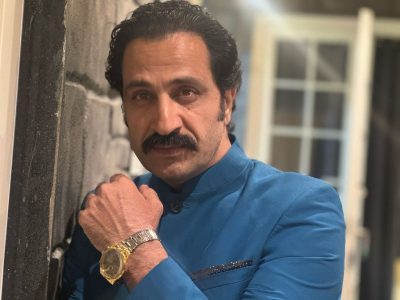Before Dil Bechara and The Fault in our Stars, Mani Ratnam’s Idhayathai Thirudathey explored death both logically and lyrically
The release of Dil Bechara, based on John Green’s 2012 novel The Fault in our Stars has left Indian viewers emotionally moved, primarily because of the unfortunate early demise of its lead actor Sushant Singh Rajput and how it seems to coincide with the fate of the character he played in it. The release of the film also led to social media debates where viewers compared and contrasted the movie with Josh Boone’s 2014 Hollywood adaptation of the same book. While Boone’s version might be a more charming and poignant, the Bollywood version by Mukesh Chhabra is elevated by AR Rahman’s young and soulful music
But what’s missing in all these debates and discussions is the fact that filmmaker Mani Ratnam had made an uncannily similar movie much before the Hollywood or Bollywood adaptations. In fact, his film released a good two decades before John Green’s book was first published. Idhayathai Thirudathe (1989), the dubbed Tamil version of the original Geetanjali in Telugu, explored the blooming romance between two terminally ill youngsters.
In spite of its unconventional premise and how it fascinatingly captured the duality of life and death — or, rather, love and death — it’s scarcely revisited in recent times.
The duality of love and death
Idhayathai Thirudathey’s exploration of the extremes of love and death delves on its primary characters and their conflict. Its male protagonist Prakash, who is diagnosed with terminal cancer, is unable to deal with the sudden arrival of definitive death. On the contrary, Geetanjali, who suffers from a terminal heart condition, seems to have embraced death as something natural, arriving earlier for some and later for others.
However, as their relationship grows, they gradually swap their responses to death. While Prakash becomes more at peace with the idea of it, Geetanjali finds the possibility of Prakash dying unbearable. So much so that she wants to end the relationship to escape such a situation.
However, this duality is not limited to just the characters or their conflict. But Mani Ratnam extends it to almost all aspects of the film. He deliberately locates a morose tale in a picturesque hill town. He even cheekily stages the first meeting between the couple in a graveyard and their first ‘duet’ is presented as a Halloween-esque dance where they are trying to frighten each other, which ironically is what they later do to each other in the relationship.

Light and shadow
This duality of love and death is beautifully captured by PC Sreeram’s cinematography as light and shadow. The visual play between the sun and the shadows it creates reflect the swinging moods of the characters and the uncertainties of their romance. This could be best illustrated through a scene where the lovers meet but before they can share their time together, a nearby death procession reminds them of their own eventuality. The camera beautifully flirts with light and shadows here and when you begin to wonder how Mani Ratnam is going to conclude the scene, he surprisingly takes us to a scorching bright desert to stage the iconic ‘Oh! Priya Priya!’ song.
Another interesting recurring visual element in the film is the presence of corridors and windows. The corridors seem to denote the passage of life, where characters are either at the extremes or navigating somewhere in-between. In fact, the Tamil title card of the film begins with a hospital corridor. And the frequent appearance of windows seems to signify an opening for the lovers to connect even if there is a wall of separation between them.
A Lullaby for Death
Ilaiyaraaja’s music too effectively contributes to the duality of the narration. In fact, it is insinuated in the opening titles itself that appear twice, first in English where the chorus sings the romantic theme ‘I love you’ with a sad vocal interjecting them. But in another few minutes, the Tamil titles are played to completely melancholic music when Prakash is undergoing various clinical tests. But even here, amidst all the gloom, Prakash playfully asks the doctor if she intends to marry him. And the music immediately jumps to delightful effervescence.
Towards the end of the movie, the lullaby like song ‘Oh! Paapa Lali!’ plays when Geetanjali is literally battling for life. But the volatility and intensity of the relationship is captured much more accurately in the soulful song ‘Om Namha’ where Mani Ratnam just lets his characters kiss non-stop and PC Sreeram’s camera goes dizzy while continuing to play with light and shadows.

The Influences
Idhayathai Thirudathey also gave us a window into the various motifs that Mani Ratnam would continue to use in his films. While the movie itself was greatly influenced by Mani Ratnam’s earlier works, it also went on to inspire several other films in Tamil and south Indian cinema. For one, the zesty and bubbly female character that you witness in Geetanjali became a regular feature in southern cinema. Mani Ratnam had earlier used a rain dance sequence to illustrate the independence of Revathi’s character in Mouna Ragam’s ‘Oho Megam Vandhadho’. He does the same here in the ‘Aathadi Ammadi’ song. And later, repeats it in Guru’s (2007) ‘Barso Re’ song too. The church scene where Prakash demands Geetanjali to announce her love for him is reminiscent of a similar moment between Karthik’s and Revathi’s characters in Mouna Ragam.
The ‘Paapa Laali’ song became so iconic that even after thirty years, filmmaker Raju Saravanan used it as a narrative tool in his film Mehandi Circus (2019) to signify the loss of love. In filmmaker Vasanth’s Keladi Kanmani (1990) that released just a year after Idhayathai Thirudadhe, the filmmaker seems to be inspired by the one-upmanship between the young lovers that is portrayed in the beginning of their relationship. Even the kiss that Prakash plants on Geetanjali’s cheek, who he hardly knows at the moment, seems to have returned as the now heavily critiqued non-consensual ‘first kiss’ in Arjun Reddy (2017).
Don’t Steal the Heart?
In all these years, Idhayathai Thirudathey remains one of those few films that effectively captures the volatility, madness and the beauty of love. And it is not often that this feat is successfully achieved in cinema. Cameron Crowe’s Say Anything is another movie that comes to one’s mind, though it only dealt with romance and not death. But interestingly, Say Anything too was released in 1989, just a month before Mani Ratnam’s.
Even today when we have Dil Bechara or The Fault in our Stars, Idhayathai Thirudathey continues to stand out in how it explores death both logically and lyrically. There aren’t too many movies that reflect on death but still have its characters frequently uttering ‘I love you’ or ‘Will you marry me?’ only to be punctuated by several kisses.
It might be a cliche and even an exaggeration to claim that any film was ahead of its time. Because any creation of art can only be a product of its own time. But the rare combination of the themes that Idhayathai Thirudathey employs continue to remain very fresh.
www.newslaundry.com





